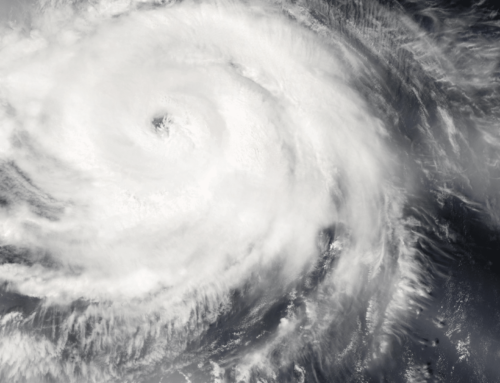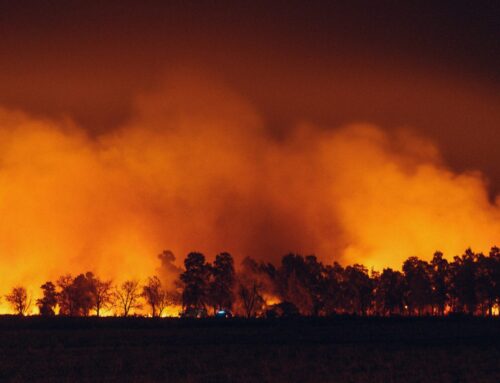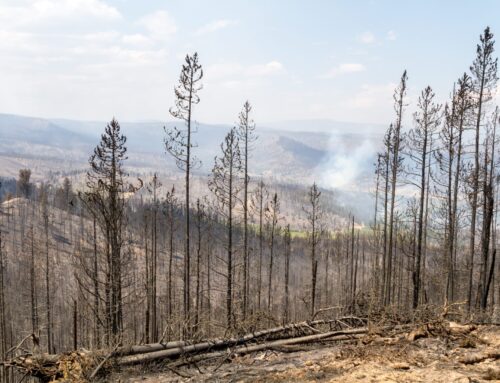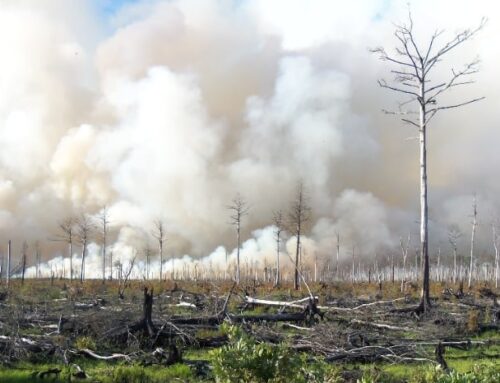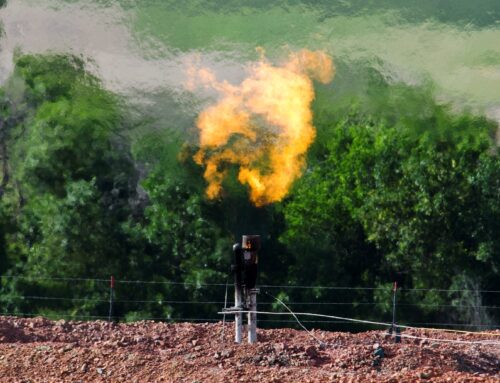Every American taxpayer needs to understand that trillions of your tax dollars will be spent in the coming decades on climate change costs — for damages, adaptation, and mitigation. On Earth Day 2021, Taxpayers for Common Sense breaks down the serious and avoidable financial threats posed by climate change. TCS Vice President Autumn Hanna and Senior Fellow Ryan Alexander join Steve Ellis for a compelling illustration of how climate is connected to every American’s pocketbook.
A transcript of this episode is available below.
Steve Ellis:
Welcome to all American taxpayers seeking common sense, you’ve made it to the right place. For over 25 years, TCS that’s Taxpayers for Common Sense has served as an independent, non-partisan budget watchdog group based in Washington, DC. We believe in fiscal policy that is based on facts. We believe in transparency and accountability because no matter where you are on the political spectrum, no one wants to see their tax dollars wasted. It’s April 22nd, Earth Day and welcome to our special Budget Watchdog All Federal podcast on climate change. I’m joined today by TCS Vice-President Autumn Hanna, who is our inaugural guest. And I want to give a special shout out and welcome to former TCS President and senior fellow Ryan Alexander. Welcome to the podcast. And I’m very lucky to have worked with, and for both of you over the years, and I’m happy to call you both my friends and colleagues.
Autumn Hanna:
Happy Earth Day. Thanks, Steve. It’s good to be back on the podcast.
Ryan Alexander:
And to get the band back together. I’m so glad to be here.
Steve Ellis:
Every American taxpayer needs to understand that trillions of your tax dollars will be spent in the coming decades on climate change costs, for damages, adaptation, and mitigation. To tackle the problem, once in a generation policies will need to be enacted and efficient investments will need to be made across the board. At the same time, an array of existing federal policies are making the problem worse, but what a lot of folks might not understand is the connection to the average American’s pocket book, AKA your pocket book. Last week, I mentioned the Taxpayer Climate Accountability Campaign, but to cut to the chase, we as taxpayers must not be the ones always paying. And we at TCS intend to hold bad actors accountable for their efforts to shift climate costs onto the taxpayer, that is in our DNA, it is what we do. We call out wasteful and harmful spending, but we’re not stopping there.
We will continue to raise awareness about the fiscal policies that are increasing and accelerating climate change. My guests today know a tremendous amount about the challenges taxpayers face when it comes to climate change. As Budget Watchdog AF listeners know, here at TCS, we work across the budget. You’ve heard us talk about defense spending, infrastructure, energy subsidies, agriculture, and a lot more. The climate change issue and associated costs affect all of these areas. This has become a grave and costly threat. Ryan, you led TCS for 13 years and were on the board for seven years before that. Can you talk about TCS’ role in climate and how that has changed over the years as we saw the clear rise in liabilities and lack of effective action, coupled with an increase in problematic actions?
Ryan Alexander:
Thanks, Steve. Reducing and avoiding longterm taxpayer liabilities has always been a core principle of Taxpayers for Common Sense. We have a set of simple statements that we revolve our work around. From, if it doesn’t work, don’t fund it. And one of them is don’t create longterm liabilities for taxpayers and climate change is at the core of that. We have supported putting a price on carbon since 1995, since our founding, it was one of the initial policy positions we took as an organization and specifically climate liabilities have been on our radar for well over a decade. I was remembering that in 2011, I testified on climate liabilities in front of the House Oversight Committee when they did a hearing on the high risk report, which is a report the government accountability office puts out every two years at the beginning of each Congress that identifies the area where the taxpayers are most exposed to risk and long-term liabilities and climate change has been on that list for a long time.
Ryan Alexander:
We also have watched many industries that are really the drivers of climate change from huge producers of carbon, the oil and gas industry, coal, biofuels, the way we do agriculture and subsidize agriculture. The giveaways that distort energy markets in favor of carbon intensive fuels. And also we’ve always been one of the few organizations we Taxpayers for Common Sense. And more specifically you Steve Ellis who have watched disaster spending and looked at it as an opportunity to make sure that we’re protecting taxpayers. Not just their money, but also really their property and their lives, because how we do disaster spending is something that is really important for everyone.
Steve Ellis:
Thanks. Ryan. That’s a really good point. We have been at this a long time. So let’s talk fossil fuels and immediate need for better accountability. Ryan, you sent me around the country with a giant check to highlight the long history of the oil and gas industry of both obtaining federal subsidies and seeking to avoid liabilities and shift the cost of climate change to taxpayers. Is it fair to say that the fossil fuel industry has poured their efforts into spreading misinformation about climate change?
Ryan Alexander:
Yes. As early as the 1960s, the oil industry, oil and gas industry knew that catastrophic harm would result from the continued, wide spread reliance on fossil fuels. They saw the catastrophe of climate change coming, but for decades, they hid this information and this knowledge from their shareholders, from regulators, from the public and from taxpayers. As climate related harms and costs increased, the industry poured their efforts into diversion, distraction and misinformation. They spread misinformation about climate change and doubled down on their image of a unique driver of economic benefits and employment. And the oil and gas industries self-conception and projection of that conception of we are a critically unique and important sector of the economy has helped them maintain that strength and made the public, not question the lives they were putting forward.
Let’s be clear. The job of the oil and gas industry is to make their companies a profit. They do create jobs, but they knew what was coming. They concealed it and they lied about it to the public. So, as long as they continue to do everything they can to shift attention away from the liabilities they’ve created, I think we have to make sure that there’s an independent voice like Taxpayers for Common Sense, holding the fossil fuel industry accountable.
Steve Ellis:
Right, because that’s our job, is to protect taxpayers. Now, Autumn Hanna, bringing you in here, share with our podcast audience, how the ongoing giveaway of the federal resources to the industry is actually locking us into a high carbon future and increase greenhouse gas emissions. Particularly in light now of some of the discussions that are going on with the climate summit, that the president is starting today.
Autumn Hanna:
So we are locking ourselves into high carbon future by virtually giving away federal land and resources to oil and gas interests. And we’ve done a terrible job of using our federal lands and assets for renewable development and non-fossil interests ones that carry lower carbon emissions in a lower greenhouse gas impact. And it’s really time that that change. As I discussed on the inaugural Budget Watchdog AF podcast with you Steve, our country has decades of old leasing policies where we’ve given away millions of acres of federal land, that’s federal land that we all own. And we have ridiculously low rental rates that haven’t been adjusted for inflation since the 80s, under President Reagan, we have minimum bids that allow acres to be leased to oil and gas interests for $2 an acre. We have outrageous non-competitive bidding, which gives away land for no bid at all. And once that land is leased and producing oil, we have century-old royalty rates. Yes, royalty rates that way back in the 1920s that have not changed while State and private royalty rates in some cases have doubled like in the oil loving State of Texas, which charges 25%.
Steve Ellis:
That’s right. I remember Texas from the last time we spoke on the podcast about the leasing pause.
Autumn Hanna:
Yep. And unfortunately for taxpayers, the subsidies don’t stop at leasing. We don’t make oil and gas companies or coal clean up their messes and stop wasteful practices. We offer the same low bonding rates we set in the 1960s and shockingly these rates don’t sufficiently cover the expenses of reclaiming well and mine sites. And guess who gets called in when the bonding rates are insufficient? That’s us. So you’ve got leasing, you’ve got reclamation. And I’ll just mention one more big giveaway that carries it, huge climate impact, and that’s the waste of taxpayer owned natural gas.
Steve Ellis:
Oh yes. Methane. I recall a big fight about methane waste at the beginning of the Trump administration, when there was a vote to repeal the 2016 methane waste rule aimed at capturing more loss gas and charging royalties, we won that vote, but I don’t know what we have won on that issue. Methane is a highly potent greenhouse gas, right Autumn?
Autumn Hanna:
Yes. Methane is 20 times more potent than CO2 when it comes to trapping heat in the atmosphere. And instead of aggressively cracking down on methane waste on better lands, both Congress and the previous administrations have either ignored or were slow to tackle the problem. Finally, in 2016, the Bureau of Land Management issued a rule replacing yet another set of old regulations, this time from the 1970s, that hadn’t kept pace with oil and gas production and the fracking boom, and really a rapid increase in production of oil and gas on federal lands. But that rule has faced legislative, administrative and legal challenges. And leak vented and flared methane never reaches consumers, so it’s particularly egregious to taxpayers, not only is this a blatant waste of taxpayer and resource, it doesn’t incur a royalty from operations on federal land and carries this heavy climate price tag. Charging royalties would incentivize, capture and lead to less waste and have a better impact on our climate outcomes.
The bottom line is these giveaways and special deals increase oil and gas profits, decrease competitiveness of cleaner, lower carbon alternatives, and lock us into oil and gas production years down the road, further exacerbating climate impacts. I’ve said it many times, we aren’t opposed to fossil fuel development, but we are opposed to giveaways and saddling taxpayers with what should be industry expenses. These subsidies do nothing more than distort the market and increase negative climate impacts. They really have to stop.
Steve Ellis:
So, I mentioned a little bit earlier about the president’s Climate Summit, that 40 world leaders are virtually joining the United States to talk about climate issues. And there has been some news about promising to have greenhouse gas emissions by 2030. So any kind of response to that or what we’re going to need to do to accomplish that?
Autumn Hanna:
I think that it’s great that we’re having these conversations. And I really applaud the administration for taking a leadership role here and getting going really quickly out of the gate here on climate. But there has to be more than talk and we have to really stop and get into the heart of this issue, looking at these subsidies and start clearing up the policies that work at cross purposes. These federal land pieces need to be addressed, the administration has pause leasing as we discussed, which is a good step as well, but really have to see what happens with these reviews and where things shake out in the future here.
Ryan Alexander:
So, one thing I wanted to add Steve to what Autumn has said is if you think about this, it’s so often in the news, the potential for developing renewable energy and the excitement that lots of folks have about the jobs that are going to be created by a new industry and a really growing industry. But the impacts of that new development will never make a difference if we don’t hold accountable the most carbon intensive industries that have been driving the energy market for the last 100 years. And I think about the work that we did on methane, I think that is the kind of work that you got to keep doing. We looked at the numbers, we kept going. We started well before that rule came in and we could tell people, look, there was eight times more methane leaked into the atmosphere for which we got nothing. Then they brought to market. These are nonsensical policies that do nothing but harm the environment at this point.
Steve Ellis:
Great. Thank you for those insights, Autumn and Ryan. And we’re talking about accountability and holding the oil and gas industry accountable. It’s making sure that taxpayers aren’t the ones left holding the bag, that they are going to pay for some of their bad actions, that they are going to pay for the impacts that they have caused to people and to communities. And what are some of those real-world consequences Autumn? How has the oil and gas industry dominance effected communities?
Autumn Hanna:
Big oil and other high powered energy interests have really worked the system for years, building wealth, limiting and skirting regulations, securing subsidies and preferential treatment with powerful well connected lobbyists. It’s time for that to end and for them to handle the financial consequences for their actions, preferential tax treatment, MSN, the oil and gas industry came out of the 2017 tax bills big winners and every major tax bill before it. And now it’s time to end those subsidies and get serious about really looking at what we are doing to further the benefits that the industry receives. We need to implement that long overdue carbon tax that Ryan mentioned earlier. One that we’ve been supporting for decades. We need to reign in on the reckless leasing that I’ve been talking about at length, we need to make the industry pay for its messes. And this is an equity issue too, as you mentioned, poor and minority communities have disproportionately affected by fossil fuel production and extraction.
And they’re hit doubly hard with climate related disasters like heat waves, flooding events, wildfires, because they often are forced to live in these high risk areas. We must hold these companies responsible. Industry has been held accountable before in the case of big tobacco and more recently opioids, petrochemical facilities have often been cited in low-income areas, leading to health problems like asthma and plenty of other things that children in those communities and the families that live there have had to endure. Low-income people in rural and urban communities don’t always have the money for air conditioning and the other things to help minimize the effects of these climate related impacts.
Steve Ellis:
That’s so true, Autumn. This is something where you recognize there’s a dollars impact and there’s a human impact in a lot of these problems that are also going to end up costing people in the long run. So let’s pivot to agriculture. There’s a lot of ground to cover here, and I want to make sure we hit all areas that are affected by our climate work. Farmers experience the increasing weather volatility, so most have come to accept the reality of climate change. This has led many groups, including the American Farm Bureau Federation and other industry interests to support increased government spending to combat climate change it’s effects on agriculture. However, those same groups fail to acknowledge that farm safety net programs, subsidizing many farming practices are driving greater greenhouse gas emissions and need to be reformed. So Ryan Alexander, how are certain USDA policies actually exacerbating rather than mitigating climate change?
Ryan Alexander:
I’ll use one example to start with, Department of Agriculture offers a subsidy for crop insurance for farmers, so that they do not pay the full premium for the insurance on the potential loss of their crops. That provides them incentive to plant as much as they can on marginal lands that they know might not be really that productive, which means that they are reducing the natural carbon sinks that say a piece of land that’s a little bit close to the river and would be a wetland and naturally absorb carbon and other pieces of land that would be more nitrogen based fertilizers, which people don’t think about it, but nitrogen based fertilizers actually create lots of greenhouse gas emissions. It also is part of the system of having significant subsidies for what we call commodity crops like soy and wheat and corn, which then crowds out a lot of other uses of the land and that diversity of crops would help keep the land and the soil healthy so that it continued to be a productive source of carbon absorption rather than a source of greenhouse gases through fertilizer.
One thing I also like to remember is that when you look at the way that the Farm Bureau and other industry groups approach this, again, they’re doing their job. What they want is to give more money to farmers, to make sure that they don’t lose. But the real change is hard, it’s change. This isn’t just about making sure that farmers are held harmless financially, it’s about making sure that farmers can afford to make the changes that they need to make to keep their farms healthy and to help contribute to improving, mitigating climate change, not making it worse. It’s not just the federal investments in commodity crop subsidies, the federal government has made investments in developing bioenergy, and a lot of those investments were intended to reduce greenhouse gases, but in fact, they increased greenhouse gases. So once again, the federal taxpayers, not necessarily from their own volition are putting money into investments that are making climate change worse.
Steve Ellis:
A colleague, Josh Sewell, who’s been on the podcast and leads our agricultural work. As a matter of fact, Josh has pointed out that he can’t be on the podcast and not talk about agriculture. So he’s not even here and he’s talking about agriculture, but it has been about not having faith based conservation as well, and that we need to actually pay for what works and then making sure that we’re not paying farmers for things that they’re already doing or that they would do otherwise. And so a lot of it is about measuring these conservation practices to make sure that they actually have the benefit and that we’re actually getting a return on our investment. I mean, as we’ve often talked about with agriculture, I mean, they’re both part of the problem and they’re a victim and they’re part of the solution dealing with climate change. And so it’s really going to be important that we invest our resources wisely in this area.
And one of the things, you mentioned crop insurance, a lot of it is about disasters, flooding, wind disasters. And so we’re going to shift into disaster area something that had been one of my Bailey Wicks for a long time. Disaster funding from the Clinton administration through the Trump administration has been a disaster despite each administration’s best intentions. And I mean that. Scary fact, no area of federal spending so directly mirrors the escalating climate change crisis, than disaster spending. On a cost adjusted basis, billion dollar disasters, United States have increased from an average of 2.9 per year at an average cost of $17.8 billion in the 1980s. In the last decade, they’ve increased a 16.2 disasters per year at an average annual cost of $121.4 billion. Ryan Alexander TCS has long argued that from both a human and a taxpayer perspective, mitigation and resilience are better ways to spend tax dollars than just responding to disasters. Please help the audience understand why federal agencies engaging in disaster response should use recovery dollars to prespond to the inevitable future disasters.
Ryan Alexander:
So the headline on why it’s important to spend money on presponding and preparing communities for disasters, as opposed to just responding when disaster strikes are two things, one, we want to prevent the actual harm that people experience. And two it’s really a much better investment. For every $6 that you spend on disaster recovery, you could prevent them with $1 of pre disaster spending. So really the money we save and the harm we prevent by investing in disaster preparedness and pre-disaster mitigation, which is a different way of saying disaster preparedness. But really also is talking about mitigating the harm that would come from the type of disasters we know we can anticipate because of climate change. If you look back through the Clinton administration and for those of us who are old enough to remember the Great Midwestern Flood of 1993, right at the beginning of the Clinton administration, and they understood that they needed to mitigate and that every administration after that realized that they cannot just ignore the need to prepare for disasters and do some mitigation in advance.
But it’s really hard politically to do that. Congress and the American people are willing to open up the checkbook when people are suffering. So it’s easier to pass disaster spending than it is to adopt spending and adopt policies to spend on a theoretical future disaster. So that’s one of the things that we’ve always looked at. And to the credit, the Trump administration, after Harvey, Irma and Maria early in their term called for a lot of post disaster spending to be used for mitigation. They also enacted some reforms to disaster funding that makes some sense, but it all doesn’t go far enough. The other thing about disaster response is it’s just another example of the built-in inequities of the system. Lots of federal assistance is based on property ownership. And we have to remember a lot of the people who live in harm’s way do so because that’s the only place they can afford to live. They’re renters, flood insurance for property owners doesn’t give them the same kind of benefit even if their landlord has some support. It doesn’t mean that they’re going to be able to get their home back.
And also, part of the reason that they live where they live, particularly in the South is history of redlining and quite frankly, really just racist policies. So if we reduce the cross subsidies that really are in place to benefit or really do benefit, maybe if they’re not in place intentionally for these wealthy coastal communities at the expense of lower income inland communities, that’s a way we can address these inequities. Providing means tested premium assistance to people who don’t have as much money. Reduce rates by reducing risk, not by increasing subsidies. So it’s important that disaster policies reflect and respond to these issues. But Steve, you are the person who has worked on the issues the most at Taxpayers for Common Sense through all 26 years of its history. So what would you say to all of these things I’ve been talking about?
Steve Ellis:
Okay. So the question is turned on the questioner. Sadly, you’re right about flood insurance and these inequalities and inequities, too often disaster assistance or flood insurance is used to help people build and rebuild in harms way instead of helping them out of the flood plain or risk zone. And you have predominantly Black communities like Princeville and North Carolina comes to mind that have repeatedly flooded, but they were only building in these low lying and risky areas because it was the only place they were allowed to build and to live at one point. And now quite rightly, they’re proud of the fact that they created a community there. And so a lot of it is about how to help those communities deal with issues such as relocation or mitigation and recognizing some of those longstanding challenges and problems. But it’s also about providing the right incentives to people, communities and States.
The federal share of disaster assistance has gone from less than 30% after Hurricane Hugo in 1989 to more than 75% after Superstorm Sandy in 2012, assistance to States should be on a sliding scale with some strings attached. States that plan for these inevitable disasters with tools and tactics to mitigate future flood risks and costs and wildfire risks should get more. States that adopt appropriate building codes and sensible zoning get more than those that continue to operate like the Wild West. So those are just some of the thoughts that we push forward to deal with these issues. Recognizing that disasters have happened, they’re going to continue to happen, but they really become a human disaster when we’ve developed in these particular places and have not done the appropriate work to mitigate and reduce risk. So I mentioned the Wild West and so speaking of the West Autumn, the catastrophic impacts of wildfires has been breaking news for years now, across our nation. So please talk with the podcast listeners about how simply increasing spending and response to disasters without making smarter investments in mitigation may ultimately contribute to ever increasing wildfires and the accompanying disaster spending.
Autumn Hanna:
Our fire policy is a great example of the willingness to throw money at problems after they happen, rather than making the investments upfront to avoid the harm. Money that can and should be spent to mitigate future fires from wildfire was being rated for firefighting year after year. Thankfully in 2018, Congress created a separate disaster fund that allows agencies to pay wildfire costs in excess of their annual suppression budget. Up to 2.25 billion in FY20 and increasing to nearly 3 billion by FY27. The change will help end this fire borrowing I describe, which has led to the US Score Service spending as much as half their entire annual budget on fire suppression. But simply increasing spending in response to disasters without making smarter investments in mitigation may ultimately contribute to ever increasing wildfires and the accompanying disaster spending. Fewer constraints on wildfire spending can also create incentives for more private development along the Wildland Urban Interface, or WOI just about the worst acronym ever though, WOI, one of the principle drivers of fire suppression costs.
The National Institute of Building Sciences, estimates that for every dollar spent on mitigating fire in the WOI disaster costs are reduced by $3, smart, taxpayer friendly reforms can help move people out of harm’s way, promote smatter construction and strengthen communities.
Steve Ellis:
Thanks, Autumn. And you’re listening to Budget Watchdog All Federal special podcast on climate change. Today is Earth Day. And the president has summoned 40 world leaders to a climate summit for the next two days here in Washington. And while they’re talking about bigger international policies, we’re talking about taxpayer issues and how the US taxpayers shouldn’t be the only one left holding the bag that we need to hold industry and others accountable. And then we need to spend our money more responsibly and wisely to deal with the issues of climate change. Now, like flood issues, policy makers also have to recognize that some of the people who live in the WOI again, as Autumn indicated, worst acronym ever, are doing so because it’s the only place they can afford to live. So it needs a holistic solution that goes beyond fireproofing and building practices.
So from defense against flooding and wildfire, let’s shift to defense spending, namely the Pentagon. If you didn’t know that climate change is a serious and costly threat to the Department of Defense and protecting America, let me fill you in, in 2018, the US Navy submitted a $21 billion plan to Congress to modernize the world’s biggest Naval base in Norfolk, Virginia, as well as shipyards in Maine, Washington and Hawaii as bases faced increasing flooding as a result of rising sea levels. A three-foot sea level rise could threaten as many as 128 US military bases worldwide valued at roughly $100 billion. Hurricane Michael damaged or destroyed every single building on Tyndall Air Force base shutting down base operations for months with repairs estimated to $3 billion. Hurricane Florence, heavily damaged Marine Corps facilities in North Carolina to the tune of $3.6 billion. So Ryan Alexander, it’s not just flooding and hurricanes that affect the sprawling defense complex. What steps can be taken to reduce these costs and prepare DOD for the inevitable impacts of climate change?
Ryan Alexander:
I think it’s really important to look at defense because it is a straight taxpayer issue. Industries that have been driving climate change for a long time, have a long history of privatizing their profits and socializing the risks by shifting cost to taxpayers, but for the Department of Defense, it’s all on taxpayers. This is a public function and taxpayers support it. So if we think about what’s great about the Pentagon and Department of Defense, they’re really good planners. That’s something that’s good about the US military is that they know how to plan. So what we need to do is shift so that we’re using the Pentagon budget processes and the Pentagon’s superior ability to plan and forecast to develop new mitigation and adaptation tools. Some of this is really simple. Like we don’t have to rebuild an Air Force base in a coastal area. It doesn’t need to be in a place where it’s so vulnerable to hurricanes and floods.
Shipbuilding doesn’t need to be on the coast, they need to be fortified, but as the Pentagon looks at its real estate portfolio, it needs to factor in reducing climate risks as it goes forward. The Pentagon can also be both a indicator of future risk, they have to increase their costs for training in certain cases because of intense heat. They have training facilities in Arizona where the equipment isn’t necessarily prepared for the type of extreme heat they get, and they can’t do certain kinds of training exercises. So they’ve got to prepare for things like that. And the military can either be a leader in adopting and driving markets towards lower carbon technologies, think about how they invest in their fleet. Are they looking at electric technology for the many kinds of vehicles that they require as they go ahead? That’s something that would move markets. Suppliers and contractors would want to produce cost efficient, low carbon technology if the military wants to buy it.
But on the flip side, they can drag progress down by entering into long-term contracts for super high carbon fuels. Autumn and I both worked in on past on the coal to liquids facility that the military was really committed to for a long time. That would be, yes, it would provide use of domestic coal, but it was almost as high carbon as you can get. And we need them to look beyond that. Look for ways to drive the market towards reducing carbon, increasing carbon sinks and using the real estate portfolio that the military pulled to try to reduce their own carbon footprint.
Steve Ellis:
Yeah. When you have as much money, $750 billion as the Pentagon does, you can either move the market or you can actually just pat and continue to squander money and not deal with the climate, to insulate yourself to some extent from the issues around climate change. And so it’s really a sector that is not often thought about in the context of climate change, but certainly as you talk to the generals and admirals who are leading our military, they’re saying this is a greater threat to the country than most people realize, certainly outside of the military.
Ryan Alexander:
One last point on the military, Steve is I think that it is important to remember that the generals, when they testify, they talk about conflicts arising from climate change. They talk about instability in countries that are part of the global South and poor because they can’t deal with climate change. They know, they see that the catastrophic consequences of climate change are just around the corner, if not already here. So they understand that if they can help drive markets towards climate mitigating technology, that that’s a good thing to do.
Steve Ellis:
Absolutely. So we’re going to leave it here, with 25 years of work as the Federal Budget Watchdog, the team at TCS can tell you without seeking to hold both bad actors accountable, while also insisting their harmful practices and perverse incentives be discouraged and eliminated. We cannot achieve the climate goals recommended by scientists. Time after time and history tells us that simply pushing bad actors aside without some accountability allows some of those same bad actors to slide back into bad habits, shifting liabilities that belong, for example, on the oil and gas industry back to taxpayers is just a way of socializing risk while privatizing profits. So there you have it, climate change and the extreme exposure for taxpayers. Autumn Hanna and Ryan Alexander, thank you so much for both the fantastic conversation and insights into the financial risks facing American taxpayers when it comes to dealing with the catastrophic impacts of climate change.
And thank you for listening to this special episode of Budget Watchdog AF. Subscribe and share, your friends and colleagues will thank you. And please email your opinions, suggestions, and questions directly to me, president@taxpayer.net. Until next time, the team at Taxpayers for Common Sense will remain laser focused on reading the bills, highlighting wasteful programs that poorly spend our money and shift long-term risks to the taxpayer.

